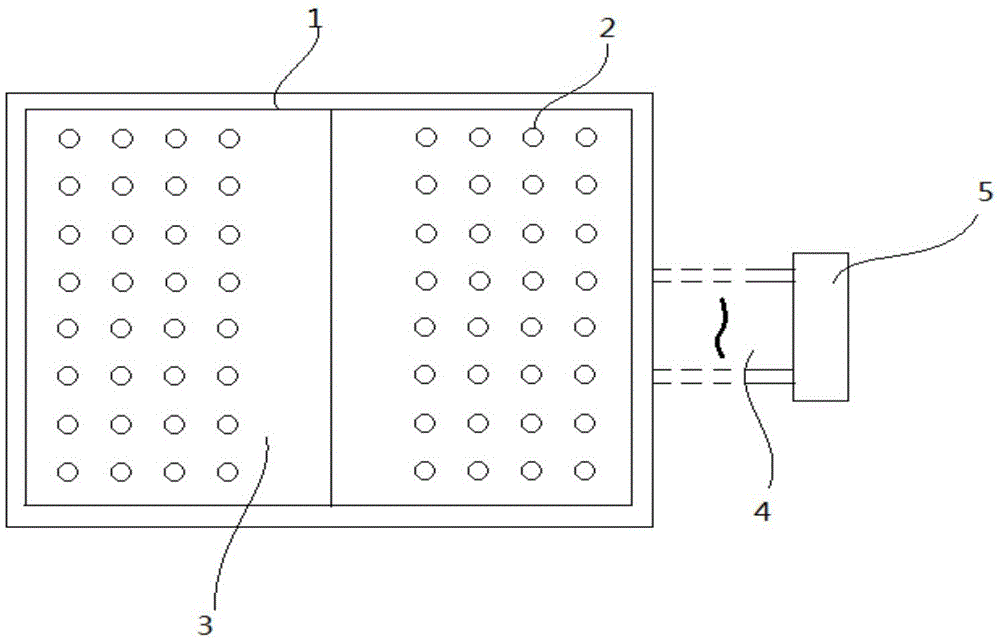Organism surface electrical signal detecting electrode array
A technology for detecting electrodes and electrical signals, used in diagnostic recording/measurement, medical science, sensors, etc., can solve problems such as inability to guarantee the consistency of test conditions, damage to the tested organism, and interference signal characteristics, and achieve high-throughput testing. and the effects of storage, efficient detection, and noise reduction
- Summary
- Abstract
- Description
- Claims
- Application Information
AI Technical Summary
Problems solved by technology
Method used
Image
Examples
Embodiment Construction
[0032] Below in conjunction with accompanying drawing, describe in detail, as figure 1 , figure 2 As shown, the electrode carrier 3 of the flexible printed circuit board is adopted, and the electrode carrier 3 adopts double-sided printed circuit wiring, and the electrode points 2 arranged in an array are arranged on the electrode carrier 3, and the electrode point array of the electrode carrier 3 is left and right Divide into 2 areas on average, and use 2-3mm printed circuit wiring as the ground wire 1 for fully enclosed surrounding, and set the pad 6 on the electrode point 2, and fill the pad with solder 7 to achieve soldering 7 and the electrical connection of the pad 6, the surface of the solder is plated with silver or silver chloride 8, and each electrode point 2 pad 6 is electrically connected to the The common interface end 5, the common interface end 5 is connected to the excitation source and the signal collector through a shielded cable, the common interface end 5 ...
PUM
 Login to View More
Login to View More Abstract
Description
Claims
Application Information
 Login to View More
Login to View More - R&D
- Intellectual Property
- Life Sciences
- Materials
- Tech Scout
- Unparalleled Data Quality
- Higher Quality Content
- 60% Fewer Hallucinations
Browse by: Latest US Patents, China's latest patents, Technical Efficacy Thesaurus, Application Domain, Technology Topic, Popular Technical Reports.
© 2025 PatSnap. All rights reserved.Legal|Privacy policy|Modern Slavery Act Transparency Statement|Sitemap|About US| Contact US: help@patsnap.com


